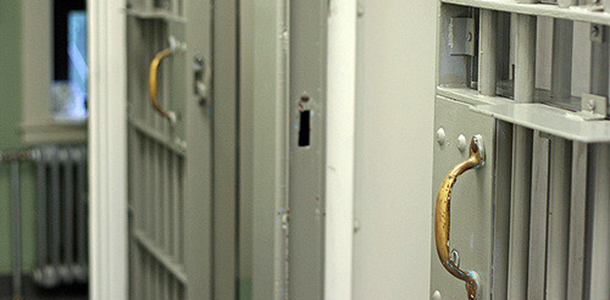
(Photo Credit: Jobsforfelonshub/Flickr)
When a national report was issued this summer that showed incarceration has largely replaced hospitalization for the severely mentally ill, the analysis reinforced what many counties across the country had been experiencing, including Riverside County.
And according the Riverside County Jail Utilization Study conducted by CA Fwd, mentally ill offenders stayed in Riverside County jails for longer periods of time and were booked more often. The national report and the Riverside County jail study also explained a contributing factor to Riverside County’s long-standing, court-ordered cap on the jail population, which has forced county officials to make changes within the system.
For the past year, the Riverside County Sheriff’s Department, which oversees the jails, and the Riverside University Health System’s Behavioral Health Department have collaborated to work with the mentally ill offenders in jail to provide effective treatment and in the process reduce recidivism among this population.
“When I’m in meetings, when I go to Sacramento on AB 109, we hear that we have some pretty exciting programs,” said Deborah Johnson, the deputy director of forensics for the Department of Behavioral Health at the Riverside University Health System. “I think as we move forward, that we’ll probably hear more from other counties, because all the counties are struggling.”
What Johnson and her team did was create a treatment of care for the incarcerated mentally ill population to successfully transition them into the community with a plan to keep them stable and out of jail. The steps include:
- Carefully screen incoming jail detainees
- Divert mentally ill people who have committed minor offenses to the mental health system. Diversion to the mental health system of mentally ill people who have committed minor offenses
- Provide assertive case management and various social control interventions, such as outpatient commitment, court-ordered treatment, psychiatric conservatorship, and 24-hour structured care; involvement of and support for families; and, provision of appropriate mental health treatment
- Provide the same level of mental health care to mentally ill offenders available to mentally ill residents in other institutions and in the community
- Provide specific training to custody staff so they can monitor inmates with mental illness and provide timely interventions
- Provide post-release supervision and coordination between mental health and correctional authorities
One important development was the creation of a core team of deputies and embedded clinical therapists in the jails who work specifically with mentally ill inmates.
“What’s wonderful is that you have custody staff working hand in glove with our medical and mental health partners as a team on each shift,” said Assistant Sheriff Jerry Gutierrez. “And the custody staff are receiving specialized training and they’re getting to know the individuals who are housed there.”
Gutierrez added that having a regular team with the inmates creates an understanding that may not occur with rotating staff: “When you get to know the individual, you may not necessarily react to certain outbursts that you may have or may see with someone who has mental health illness and not over-react to it.”
Additionally, at every shift change, the team meets with the oncoming shift to communicate any issues that may be occurring among the inmates. “It just lends itself to better treatment, better communication, keeping people stable and keeping people out of trouble,” said Johnson.
Another important change was the addition of “day rooms,” where inmates attend both group and one-on-one therapy sessions depending on the acuteness of their mental illness. As the inmates progress, they will “step down” into other day rooms that correspond to the level of care they need. There are currently six day rooms, which amount to 192 jail beds, at the Larry Smith Correctional Facility in Banning. The severely mentally ill are housed and treated at the Robert Presley Detention Center in Riverside and moved when their condition improves.
“The inmates have very positive evaluations back about having the ability to have a one-to-one therapy session with a clinical therapist and be able to participate in groups with other people to deal with some of their issues,” said Johnson. “Attached to that is our goal to step them all the way down to that last day room, which we call ‘the pre-discharge.’”
Johnson with the Behavioral Health Department credited the study and work groups facilitated by CA Fwd’s Justice System Change Initiative.
“The data helped to refocus us and to remind us that the hypothesis that we have been operating under from the very beginning was really proven true because it pushes us to start to look at the processes in jail to figure out why is it that these people are staying longer than other people,” said Johnson, who is also encouraged by what she is hearing from other counties about the work occurring in Riverside County.
Gutierrez agreed: “We’ve really taken this seriously and we’re really looking at it because we’d like to get these individuals through the adjudication process and hopefully back in the community and get them linked up with services outside the community.” He added, “At the end of the day, reduced recidivism is our goal.”

